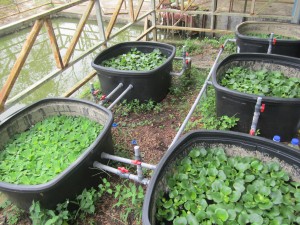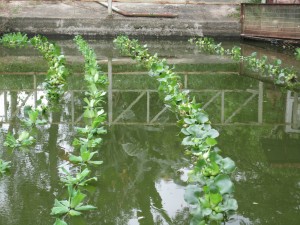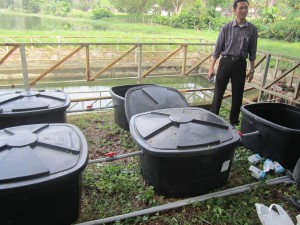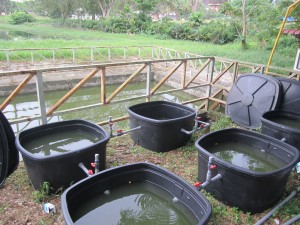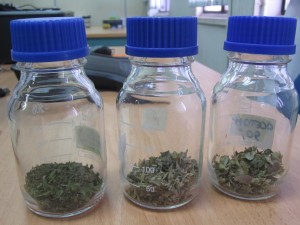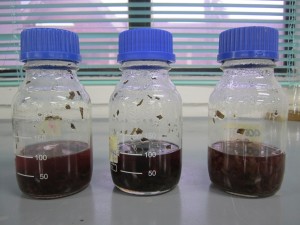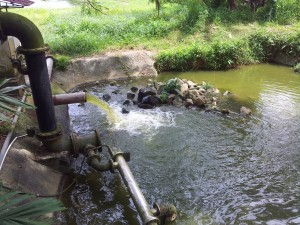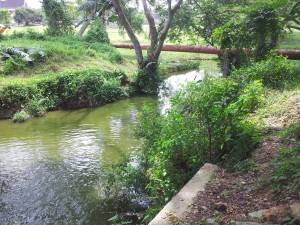The project is aiming to implement a low cost efficient treatment for the existing domestic treatment plant as ponding system. Moreover, this project aims further cooperation between Universiti Teknologi Malaysia and Jabatan Perkhidmatan Pembetungan (JPP) under the Ministry of Energy, Green Technology and Water, to ensure success implementation of this project. Major concerns have been attained from the existing domestic/municipal wastewater treatment which consistently fails to meet environmental standard. The main problem arises from the inefficient biological processes which occur in natural system, since many ponding systems do not have further mechanical process to improve the treatment and most of the ponding system is reluctant to maintain and service regularly due to their insignificant discharge quality thus proving unsuitable for future applications. In order to overcome these problems, a culture of aquatic plant is proposed to the selected location of ponding system. The proposal is to introduce a low cost efficient biomass cultivation system within the waste water containing pond followed by biomass harvesting for the development of bio-energy in the form of bio-briquette and bio-ethanol. Thus the present proposal will provide full proof biotechnological processes for efficient and effective utilization of a cost effective, renewable and biodegradation resource-water hyacinth and thereby pilot scale facility will be developed as an advancement of the technology obtained. The process development will help in minimizing the current fuel demand and import potential bio-energy product to expiate the needs of the current market.
The project shall utilize all wastewater pond cells with 80 – 90 percent allowance of effectiveness space in each cell. The space is needed to ensure that the culture system operate efficiently and is easy to harvest biomass during the peak period. The proposed technique will emphasize a concept of “fabricate and install” as to reduce the capital cost required including the harvesting method. Each cell will be proposed as a culture unit and the final wastewater pond cell will serve as a channel of discharge to maintain the growth of aquatic plants.
Water hyacinth is invasive aquatic and abundant plant which has the ability to absorb nutrition from wastewater and is reported to be a good candidate for producing substitute fuel likes bio-ethanol because it contains high percentage of cellulose and hemicelluloses. Interestingly, water hyacinth is low in lignin content (10%), high in cellulose (25%) and hemicelluloses content (35%), these show the promises of converting fermentable sugar present in it to be converted into bio-ethanol which can be achieved during fermentation process. Ethanol from water hyacinth is also an attractive sustainable energy fuel source for cheaper and cleaner environment compared to conventional petroleum. As an alternative to this “traditional” diesel fuel, bio-ethanol is expected to yield significant energy security and unlimited energy resource. Literature review shows that energy ratio produced by bio-ethanol is 70% more pure than gasoline. Dried water hyacinth biomass can also serve as fire burner (briquette-biomass) with the target to replace the existing charcoal material used at power plant for generating electricity. The biomass can be converted to solid form and the burning of this dried biomass could alter the polluted gas generated by conventional method and reduce the pricey of using charcoal material. As a conclusion, water hyacinth is the expected potential energy that is suitable for future resource and to solve global environmental issues.
Pages: 1 2
